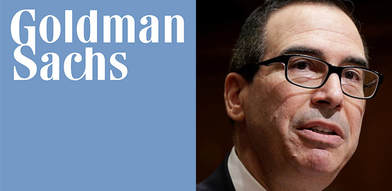 Following the news can give the impression that the world of business, and finance especially, is very well connected internally and to other sources of profits. As of March 16, the still-understaffed Trump administration had hired five people from Goldman Sachs, and coincidentally, Goldman has reported that increased trading has helped its quarterly profits increase more than threefold. Simultaneously and unrelated to this, billionaire investor Carl Icahn, who now advises the president on deregulation, has seen his shares in his oil refinery increase significantly in value (oil refineries are regulated because of their pollution and climate effects). So is finance a web that entangles everyone? Not really. Goldman Sachs is special because the bank has and exercises market power, which in turn helps attract network ties. Icahn’s role is, well, a bit more personalized and complicated. In general, though, finance is an industry that competes like any other industry, and network ties among its firms adapt to competitive concerns. This is why a paper in Administrative Science Quarterly by Pavel I. Zhelyazkov nicely shows how networks have systematic gaps both in finance and other industries. To start, networks connect because introductions and friends-of-friends connections help firms find trustworthy and capable partners when they want to execute complex tasks that are too big for one firm alone. This is the logic driving networks tie formation. The same logic of why ties are formed helps explain why ties do not form, leading to gaps in the network. First, the need for firms to find trustworthy and capable partners means that connections are premised on success – friends recommend their good friends, not the cheats and failures they know. Second, the use of ties to help share tasks means that connections are not made to strong competitors, because they might just take the entire business away. In fact, for close competitors the more capable are the ones that should be avoided the most, because they could take away a big portion of the business. So does this logic hold? The study looked at venture capitalists seeking investment ties from private equity limited partners, which is an interesting tie because venture capitalists look for promising firms to invest in, and private equity is a big pool of money. They work together, and they work on a complex task of finding good prospects and helping them succeed. Venture capitalists do form networks that interconnect them and private equity partners, as one would expect if venture capitalists who have some past connection also make introductions. But also, as expected, these ties are formed exactly when there is past success and absence of low competition – past failures or current competition create gaps in the network. So are the venture capitalists the normal kind of network builders, or are investment banks like Goldman Sachs normal? Arguably the venture capitalists are normal, because they deal with uncertainty and competition, which are constants in business. Centers of power, whether economic or political, play by different rules than the rest of the world. Zhelyazkov, Pavel I. 2017. Interactions and Interests: Collaboration Outcomes, Competitive Concerns, and the Limits to Triadic Closure. Administrative Science Quarterly, forthcoming. |
Blog's objectiveThis blog is devoted to discussions of how events in the news illustrate organizational research and can be explained by organizational theory. It is only updated when I have time to spare. Archives
May 2024
Categories |
 RSS Feed
RSS Feed